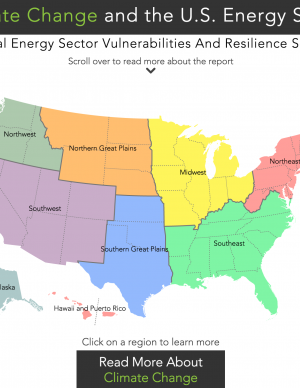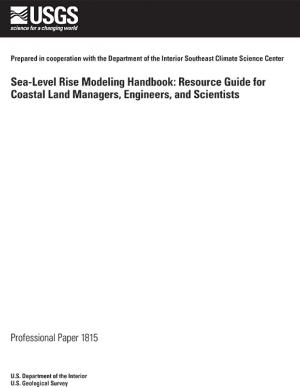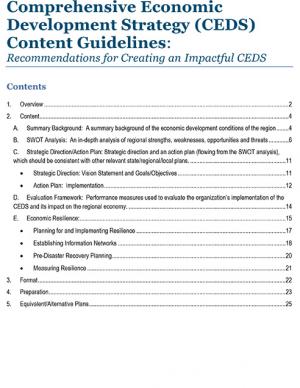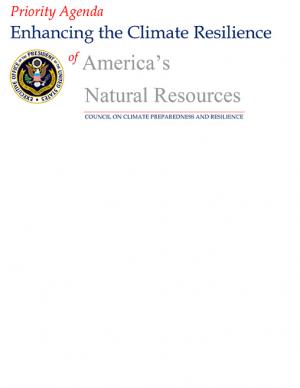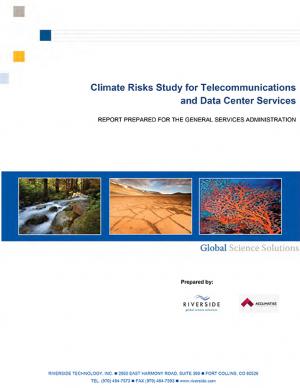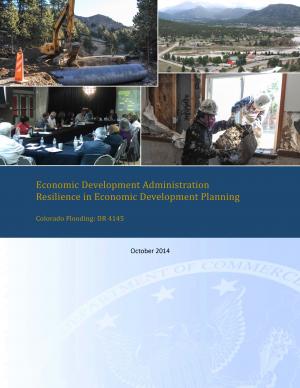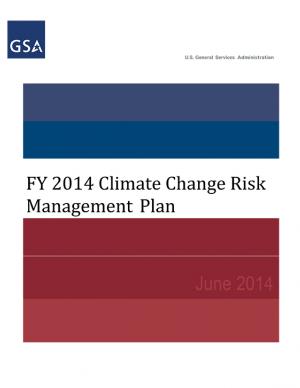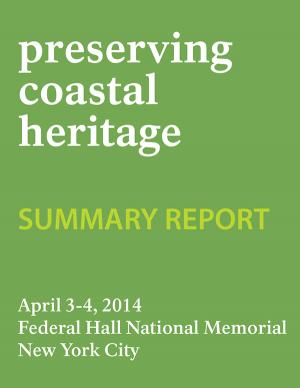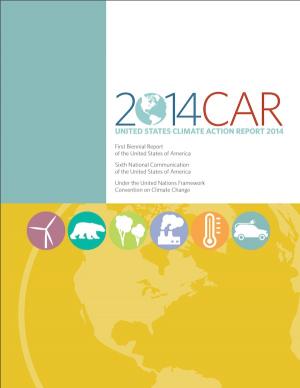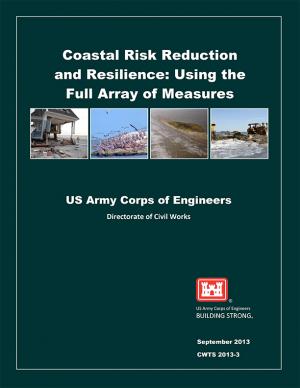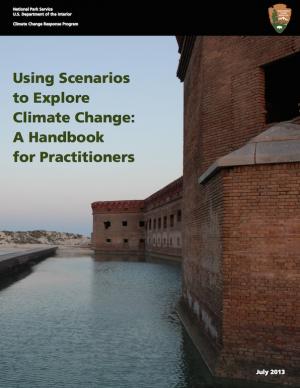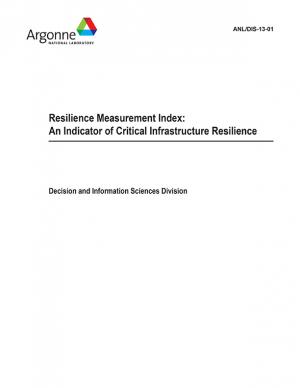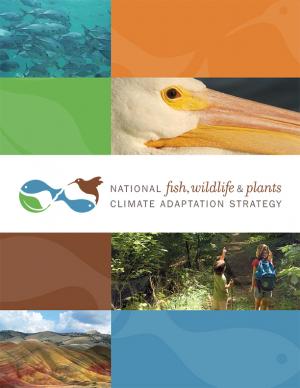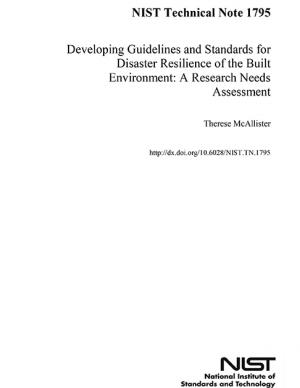Access a range of climate-related reports issued by government agencies and scientific organizations. Browse the reports listed below, or filter by scope, content, or focus in the boxes above. To expand your results, click the Clear Filters link.
An interactive map provides access to one-page documents of climate and energy information customized for nine regions of the United States. Each document summarizes climate impacts for the region; provides a table of Quick Facts on energy supply and demand, electrical power, and critical infrastructure in the region; and enumerates examples of important energy sector vulnerabilities and climate resilience solutions.
This publication is the annual National Marine Fisheries Service yearbook of fishery statistics for the United States for 2014. The report provides data on U.S. recreational catch and commercial fisheries landings and value, as well as other aspects of U.S. commercial fishing. In addition, data are reported on the U.S. fishery processing industry, imports and exports of fishery-related products, and domestic supply and per capita consumption of fishery products.
Under the Clean Air Act and President Obama's Climate Action Plan, this plan would cut carbon pollution from existing power plants, the largest source of greenhouse gas emissions in the U.S.
This handbook (USGS Professional Paper 1815) was designed as a guide to the science and simulation models for understanding the dynamics and impacts of sea level rise on coastal ecosystems. Coastal land managers, engineers, and scientists can benefit from this synthesis of tools and models that have been developed for projecting causes and consequences of sea level change on the landscape and seascape.
This document guides federal land managers in the effective and efficient use of available resources and engaging public and private partnerships in taking action for the conservation and management of pollinators and pollinator habitat on federal lands.
In the devastation that follows a major disaster, there is a need for multiple sectors to unite and devote new resources to support the rebuilding of infrastructure, the provision of health and social services, the restoration of care delivery systems, and other critical recovery needs. In some cases, billions of dollars from public, private and charitable sources are invested to help communities recover. National rhetoric often characterizes these efforts as a "return to normal." But for many American communities, pre-disaster conditions are far from optimal. Large segments of the U.S. population suffer from preventable health problems, experience inequitable access to services, and rely on overburdened health systems. A return to pre-event conditions in such cases may be short-sighted given the high costs - both economic and social - of poor health. Instead, it is important to understand that the disaster recovery process offers a series of unique and valuable opportunities to improve on the status quo. Capitalizing on these opportunities can advance the long-term health, resilience, and sustainability of communities - thereby better preparing them for future challenges.
The Resilient Strategies Guide for Water Utilities provides options for drinking water, wastewater, and stormwater utilities to assist them in developing plans that contain strategies that address their specific needs and priorities.
The Guide outlines the resilience planning process and helps you to identify potential strategies and promote a better understanding of resilience strategies. At the end of the Guide, you can download a report containing all of your selections and submitted information.
Find out how hometowns across the United States are building their resilience to climate change. Two women who studied climate change science and policy in graduate school took a three-month road trip to find out what climate change adaptation looks like in the United States. They visited more than 30 communities preparing for climate change and documented what they learned in blogs and through media reports. This report describes six big lessons from the ongoing adaptation work they saw across the country.
It is becoming increasingly apparent that regional economic prosperity is linked to an area’s ability to prevent, withstand, and quickly recover from major disruptions (i.e., "shocks") to its economic base. Many definitions of economic resilience limit its focus on the ability to quickly recover from a disruption. However, in the context of economic development, economic resilience becomes inclusive of three primary attributes: the ability to recover quickly from a shock, the ability to withstand a shock, and the ability to avoid the shock altogether. Establishing economic resilience in a local or regional economy requires the ability to anticipate risk, evaluate how that risk can impact key economic assets, and build a responsive capacity. Building economic resilience is highlighted in this guide from the U.S. Economic Development Administration. The guide is primarily intended to assist in efforts to develop the content of a CEDS document, suggesting how to develop the document’s format and substance to make the strongest, most useful, and most effective CEDS possible.
The American Planning Association's Hazards Planning Center worked with FEMA to develop Planning for Post-Disaster Recovery: Next Generation. This updated manual offers a no-nonsense explanation of the benefits and limitations of planning for unpredictable events.
This report documents how rapid innovation and new investment in infrastructure are making it possible to tackle climate change and improve economic performance. Countries at all income levels have the opportunity to build lasting economic growth at the same time as they reduce the immense risk of climate change.
In this Priority Agenda, the Council on Climate Preparedness and Resilience outlined four strategies to help make our natural resources more resilient to climate change. The agenda represented a first-of-its-kind, comprehensive commitment across the federal government to support resilience of our natural resources, documenting progress and providing roadmaps for action. The actions outlined in the agenda focus on protecting important landscapes and developing new science, planning, and tools to foster climate-resilient lands and waters; enhancing U.S. carbon sinks such as forests, grasslands, wetlands, and coastal areas; promoting innovative 21st century infrastructure that integrates natural systems into community development, including green storm water infrastructure; and modernizing federal programs, investments, and services to build resilience and enhance carbon storage.
This study investigates how climate change will impact the telecommunications and data center services sector. The report looks not only at the headline-grabbing impacts of extreme weather events, such as those incurred by Hurricane Sandy, but also the risks brought on by slow-onset, gradual changes to the base climate.
Colorado experienced extensive flooding and landslides in September 2013. During the recovery effort, several important economic recovery issues emerged—among them was a desire to learn from the disaster and integrate resilience into the economic sector. To that end, the Economic Development Administration conducted a study to establish a baseline of current economic resilience planning efforts in the area, identify trends and current resiliency practices, and develop recommendations to assist communities, state and regional economic development organizations, and federal agencies in stimulating resilience planning. This document provides an overview of resilience in the context of economic development and its application to a tool for evaluating resilience in economic development plans.
Without significant changes, existing water systems will soon no longer be able to provide the services that citizens have come to expect. After six years of research, The Johnson Foundation presents a resource intended to examine challenges associated with quality, availability, and resilience of U.S. freshwater resources due to climate change, aging infrastructure, and extreme events. The report contains a set of principles to help guide the efforts of leaders in various sectors as they act upon the recommendations offered.
This report outlines 100 recommendations to help improve federal programs and their ability to prepare for climate change, drawing from a series of workshops with leading federal, state, and local officials and building upon lessons learned post-disaster in New Orleans (following Hurricane Katrina), New York (following Hurricane Sandy), and Vermont (after Hurricane Irene). The report identifies more than 30 federal programs, initiatives, and laws that can be used to prepare for extreme events such as storms, floods, and heat waves as well as rising seas. This report informed the White House's State, Local, and Tribal Leaders Task Force on Climate Preparedness and Resilience.
A 24-year tradition encompassing the work of 425 authors from 57 countries, 2013's State of the Climate report uses dozens of climate indicators to track patterns, changes, and trends of the global climate system.
This technical report looks at more than 60 years of coastal water level and local elevation data, analyzing sea level rise and nuisance flood frequency changes around the United States.
This plan summarizes the U.S. General Service Administration's approach, accomplishments, plans, actions, and coordination activities to evaluate the agency’s climate change risks and vulnerabilities to manage both the short and long-term effects of climate change on the agency’s mission and operations.
This report looks at how climate change is affecting the nation’s wildlife and habitats, and addresses how natural resource managers need to prepare for and adapt to these unprecedented changes.
The National Climate Assessment assesses the science of climate change and its impacts across the United States, now and throughout this century. It documents climate change-related impacts and responses for various sectors and regions, with the goal of better informing public and private decision making at all levels.
The assessment draws from a large body of scientific peer-reviewed research, technical input reports, and other publicly available sources; all sources meet the standards of the Information Quality Act. The report was extensively reviewed by the public and experts, including a panel of the National Academy of Sciences, the 13 federal agencies of the U.S. Global Change Research Program, and the Federal Committee on Environment, Natural Resources, and Sustainability.
In April 2014, the National Park Service (NPS) convened a select group of leaders in the fields of planning, architecture, landscape architecture, historic preservation, archeology, science, and park and cultural resource management to participate in a planning session entitled Preserving Coastal Heritage. This summary report provides the recommendations and feedback that emerged over the course of the two-day work session, along with highlights from the presentations and remarks. Case studies include four sites in New York and New Jersey. The Preserving Coastal Heritage work session was part of an NPS effort to develop a cultural resources climate change response strategy.
The plan guides research and monitoring investments that will improve our understanding of ocean acidification, its potential impacts on marine species and ecosystems, and adaptation and mitigation strategies. Highlights of the plan's research goals include improving existing observing systems that monitor chemical and biological effects of ocean acidification; undertaking laboratory and field research to examine the physiological, behavioral, and evolutionary adaptive capacities of selected species; developing comprehensive models to predict changes in the ocean carbon cycle and effects on marine ecosystems and organisms; developing vulnerability assessments for various carbon dioxide emissions scenarios; and assessing the cultural, subsistence, and economic effects of ocean acidification.
The U.S. Department of State prepared the first Biennial Report of the United States of America to the United Nations Framework Convention on Climate Change (UNFCCC). The report details actions the United States is taking domestically and internationally to mitigate, adapt to, and assist others in addressing climate change.
Coastal areas are especially vulnerable to hazards, now and in the future, posed by waves and surges associated with sea level change and coastal storms. Coastal risk reduction can be achieved through a variety of approaches, including natural or nature-based features (e.g., wetlands and dunes), nonstructural interventions (e.g., policies, building codes, and emergency response such as early warning and evacuation plans), and structural interventions (e.g., seawalls and breakwaters). This report discusses the U.S. Army Corps of Engineers' capabilities to help reduce risks to coastal areas and improve resilience to coastal hazards through an integrated planning approach.
Prepared for the 2013 National Climate Assessment and a landmark study in terms of its breadth and depth of coverage, this report is the result of a collaboration among numerous local, state, federal, and nongovernmental agencies to develop a comprehensive, state-of-the-art look at the effects of climate change on the oceans and marine ecosystems under U.S. jurisdiction.
The United States' 28 National Estuarine Research Reserves (NERR) are experiencing negative effects of human and climate-related stressors, according to this report. This is the first national-scale climate sensitivity analysis of estuaries to help coastal managers protect the health of estuaries.
This report examines current and potential future impacts of climate trends on the U.S. energy sector.
This handbook describes the five-step process for developing multivariate climate change scenarios taught by the Global Business Network (GBN) during a series of training workshops hosted by the National Park Service in 2010 and 2011. The authors created this guide as a reference for workshop participants, who possess some familiarity with scenario planning. Detailed instructions are provided on how to accomplish each step of the scenario-building process; appendices include a hypothetical scenario exercise that demonstrates how to implement the process, some early examples of how national parks are using climate change scenarios to inform planning and decision making, and advice on designing and facilitating scenario workshops. Building scenarios is a dynamic, flexible, iterative practice that you can tailor to fit your needs—the handbook can be used as a reference when designing scenarios and scenario exercises.
President Obama's Climate Action Plan includes a series of executive actions to reduce carbon pollution, prepare the United States for the impacts of climate change, and lead international efforts to address global climate change.
The Resilience Measurement Index (RMI) was formulated to capture the fundamental aspects of resilience for critical infrastructure with respect to all hazards. The RMI methodology supports decision making related to risk management, disaster response, and maintenance of business continuity. It complements other indices that have been developed―the Protective Measures Index and the Consequences Measurement Index―and thus, in combination with other tools, allows critical infrastructure to be compared in terms of resilience, vulnerability, consequences, and ultimately risk.
This report summarizes the current state of knowledge on potential abrupt changes to the ocean, atmosphere, ecosystems, and high-latitude areas, and identifies key research and monitoring needs. The report calls for action to develop an abrupt change early warning system to help anticipate future abrupt changes and reduce their impacts.
From the Arctic to the Everglades, impacts like rising sea levels, warmer temperatures, loss of sea ice, and changing precipitation patterns are affecting the species we care about, the services we value, and the places we call home. Federal, state, and tribal partners with input from many other diverse groups from across the nation have worked to develop a common strategy to respond to these challenges. The National Fish, Wildlife, and Plants Climate Adaptation Strategy provides a unified approach for reducing the negative impacts of climate change on fish, wildlife, plants, and the natural systems upon which they depend.
Two national workshops were convened in 2011 to assist the National Institute of Standards and Technology (NIST) with identifying critical gaps and needs in tools and metrics for assessing the resilience of the built environment. The Resilience Roundtable convened invited leaders from engineering practice and research communities and the standards development community to identify gaps in current practice, standards, and codes and the assessment and design of resilient buildings and infrastructure systems. This report—NIST Technical Note 1795—presents the technical gaps and research needs for developing standards on community resilience planning, metrics, and tools for assessing facility and community resilience.
Global sea level has been steadily rising for decades and is expected to continue. Scientists have very high confidence that global sea level will rise at least another 8 inches and as much as 6.6 feet by 2100, causing significant impacts in U.S. coastal regions. This report lays out the science and describes possible scenarios to help planners and policy leaders assess the risks.
In August 2011, NOAA, the EPA, and the state Sea Grant College Programs of Hawaii, Rhode Island, and Texas hosted a two-day roundtable meeting of national experts from the fields of smart growth, hazard mitigation, climate change adaptation, and coastal management. This report provides an overview of ideas shared during the roundtable. The information is intended to help practitioners consider opportunities for further research, product development and services, and integration of the fields.

